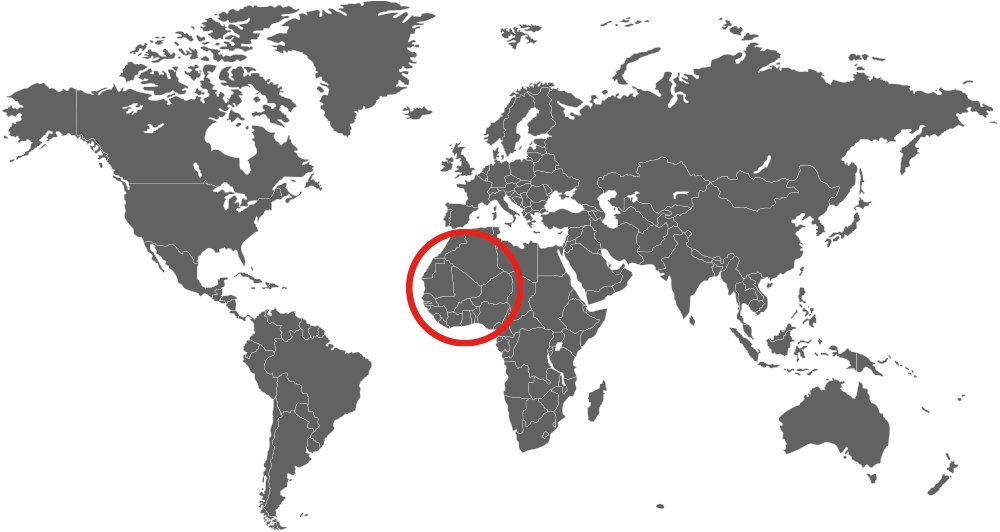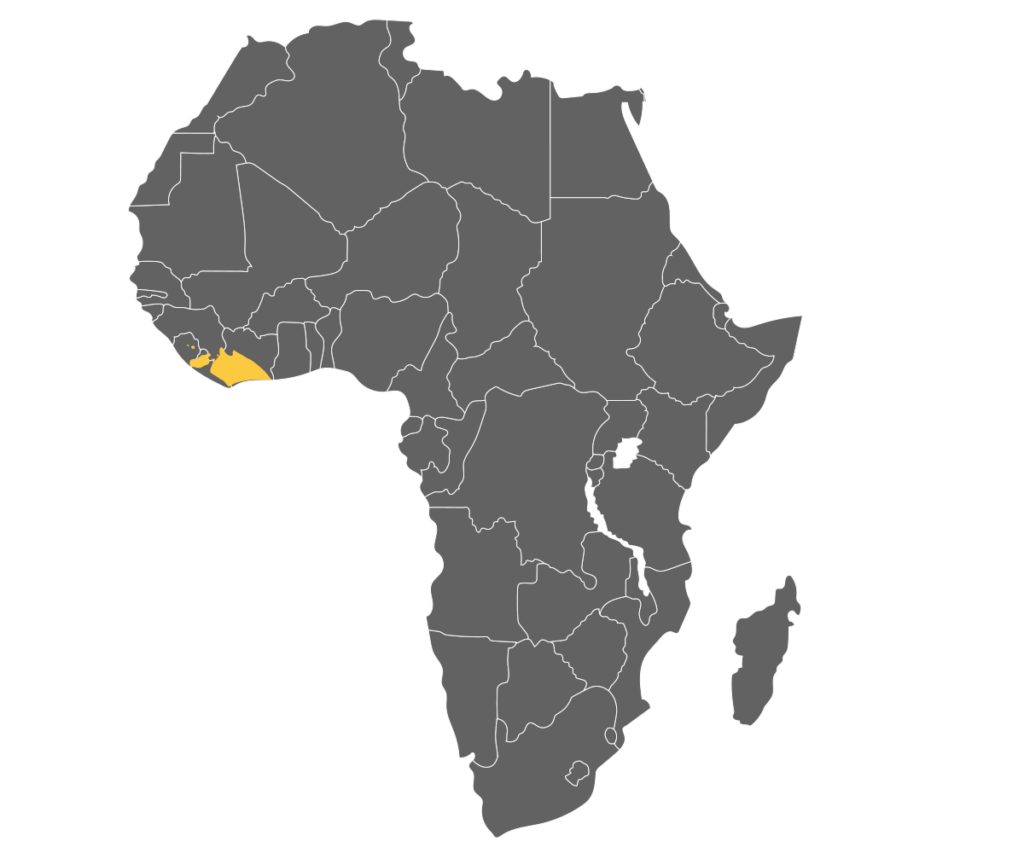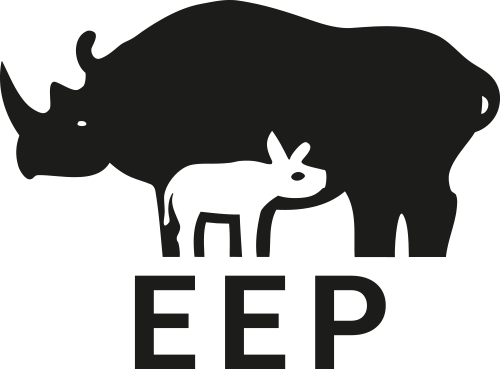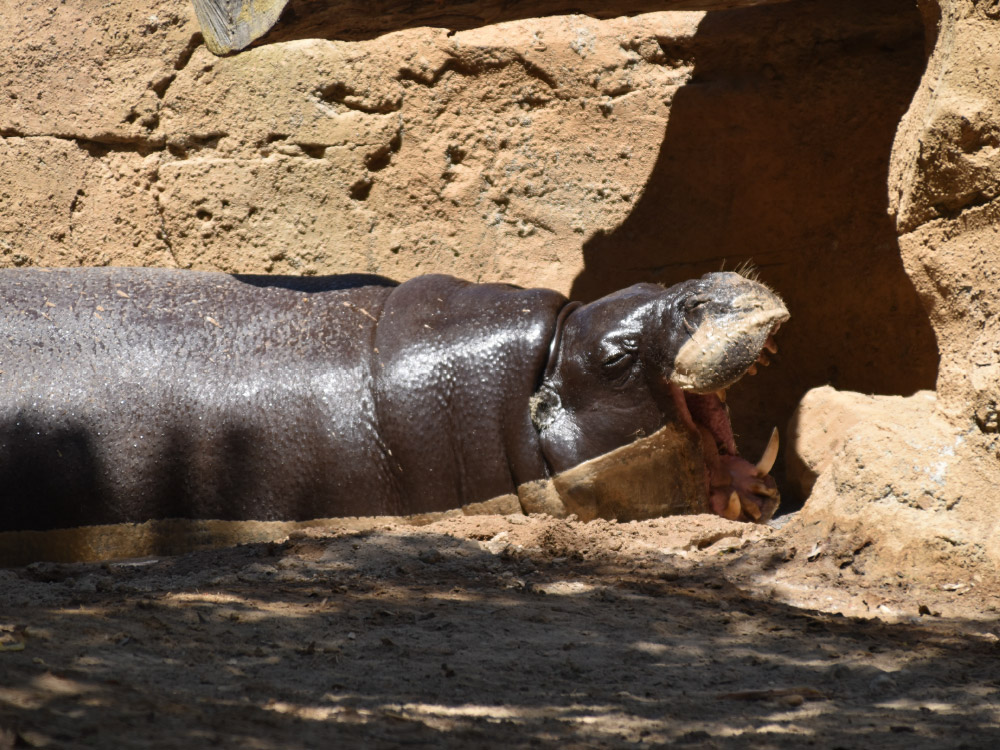Conservation Status:
Endangered

habitat
jungle
diet
herbivorous
social life SOLITARY

weight
160-270 Kg
gestation
184-210 days



Conservation
programme
Pygmy hippos inhabit lowland primary forests, close to rivers or swamps and are rarely seen due to their secretive, nocturnal habits. Very little is known about their ecology in the wild.
They spend the day hidden in swamps, wallows or hollows under the banks of streams, and they are mainly active from late afternoon until midnight.
Pygmy hippos are very solitary and will deliberately avoid encounters with others. Marking is therefore a very important part of their behaviour and is mostly done with dung, a lot of it tail-splattered or heaped.
The pygmy hippo’s diet is herbivorous, based on terrestrial and semi-aquatic plants, which it pulls from the stem with the lips.
Populations in the wild have disappeared from many sites and become fragmented. The especies currently occurs in only four West African countries and habitat loss is its major threat, with an estimate forest cover loss of over 5000km² by 2012, due to logging, land conversion for agricultural use and human population increase, with subsequent infrastructre advances. All these factors are expected to continue to increase.

